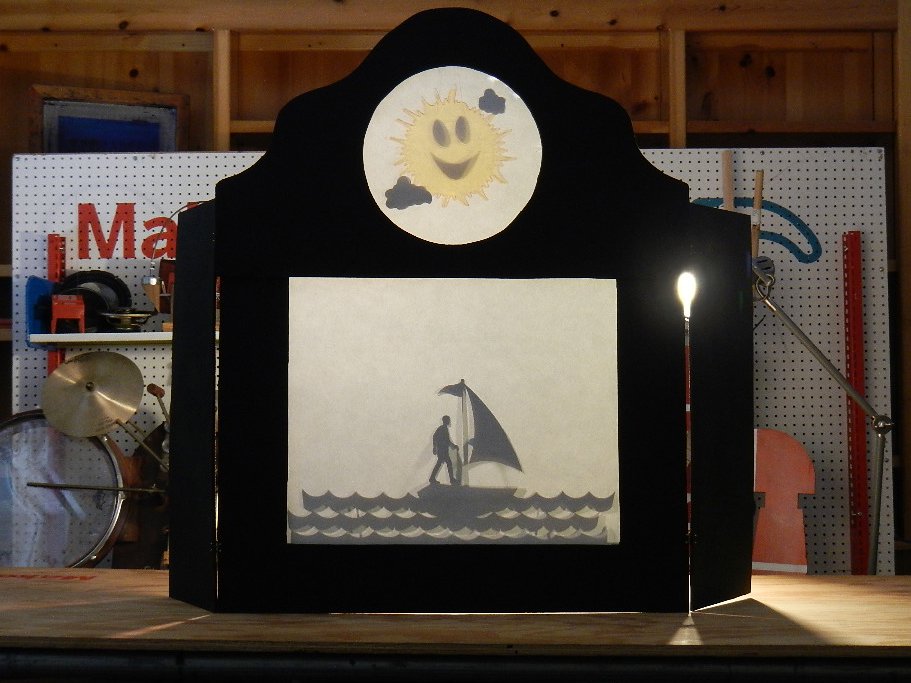Shadows can be cast by any solid object, so you can make your puppets out of almost anything!
Draw your puppet on black construction paper or any other material you have available (like some of the leftover cardboard) and cut it out. Cereal boxes are opaque enough to block the light, but easier to cut cleanly than corrugated cardboard,
Shadow puppetry isn’t limited only to black shadows! You can add a splash of color into your creation using colored acetate transparencies. You can cut out some holes and cover them with your colored transparencies to create colored spots. (Please note that while colored acetate will create color, marker ink does not!)
For opaque puppets, use the masking tape to create a flap on a wood skewer and tape that flap to the back of your puppet. Do this for each of your puppets.
Chrissy also uses cardstock and bendy straws. The crook of the bendy straw allows you to keep your hand farther away from the scrim, so its shadow won’t interfere with the shadow puppet image.
Be sure to design your puppets to be big enough to be seen from the back of your audience and to occupy a decent amount of the space of the scrim.
To make your puppets slightly more challenging a project, add joints for motion and movement, and extra sticks to move the different parts independently.
Use only very dark black or brown markers or heavily applied grease pencils to add details. Satbir Multani who runs Shadow Puppets workshops with the New York Hall of Science warns us “With colors people get bogged down by the detail of coloring and when they make their shadows it doesn’t show up, they get confused and sometimes frustrated because they spent so much time on the coloring.”
Put some black contact paper or other opaque tape on a clear transparency.


















